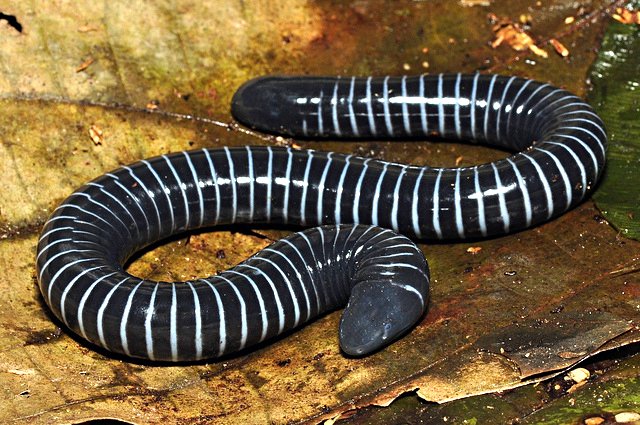
| Main | Neocene |

All pictures are taken from open sources and belong to their authors
The reconstruction of possible biospheres of suitable for life
exoplanets only at first glance seems an unsolvable task. Planets living by
their own laws, unknown life based on unknown principles... Principles and laws
are the same throughout the universe. As a result, the ways of life development
everywhere will be similar to those on the Earth, but adjusted for the peculiarities
of local conditions. And if these conditions are too much different from the
conditions on the Earth, then there will be no life on the planet at all, so
there is nothing to reconstruct.
As a rule – at least, this applies to all exoplanets discovered for now – the
conditions on them are not that impressive. Complete with liquid water and moderate
temperatures, there are lots of various factors that do not contribute to the
prosperity and development of life. Thus, life on these planets can be similar
to life on Earth only in one of the long-past geological epochs. As a rule,
of archean era. So there is nothing to reconstruct. The world of bacteria. It’s
good if they are able to photosynthesis.
Ok if not bacteria – let they be ferns and dinosaurs. It is always possible
to reconstruct a more primitive world adjusted for local peculiarities. What
if the alien world is older than ours? What will the oceans, forests and animals
look like in 100 million years? What paths will the evolution of species take?
Planets with dense atmospheres, low gravity, high gravity, completely covered
by a bottomless ocean, even orbiting black stars that do not give visible light
– it this is interesting. However, if evolution simply goes further than it
has gone on the Earth at the moment, the planet will be filled with much more
alien and unusual forms of life than in any of the previous cases.

|
And such planets are difficult to reconstruct. We can only
talk about some general trends. First of all, animals on an ancient planet will
differ in relatively higher intelligence.
For the last 20-30 million years on the Earth, evolution has been paying less
and less attention to the shape, concentrating on the inner content. Modern
wolves are weaker than the “dire wolves” (Canis dirus) that lived in the Pleistocene,
but they are much smarter. The improvement of natural weapons has completely
lost its meaning, because the wolf is already able to kill a creature much larger
than itself, and at the same time feeds mainly on voles. Increasing intelligence
gives better results. Moreover, it is stable and guaranteed. The ability to
learn and analyze the situation can always be useful.
It is logical to assume that all species of the ancient planet, large enough
to afford a large brain, will have intelligence comparable to human one or even
higher. However, the presence of abstract thinking, culture, arts and language
does not imply an indispensable tool activity and the emergence of what we consider
“civilization”. Making tools and adapting to environmental conditions with their
help is exactly the way of adaptation and nothing more – one of the ways.
It can also be expected that species not large enough to acquire the necessary
brain size – arthropods, for example, but not only – will change much more by
switching to a social lifestyle that allows them to adapt due to the physical
specialization of “castes”, or by engaging in complex symbiosis schemes. One
can imagine turtles with wasp nests in their shells, or colonial rodents with
a mouse-like caste for actions in the forest floor, workers equipped with a
gliding membrane to conquer the upper levels of the forest, a caste of digging
builders, and a caste of soldiers for protection and incidental predation.
Animals that do not feel a vocation neither to higher mental activity, nor organization
or symbiosis, will also find a way out. One of the options available to worlds
with an ancient and rich evolutionary history is polymorphy. That is, the ability
of a creature to change its physical structure depending on conditions. To do
this, you just need to have several sets of genes.
Genetic plasticity is an effective method of adaptation. But it has its own
price. Species that change their body structure depending on external conditions
have an abnormally high frequency of genetic defects.
Polymorphy is not fantastic, and it works. After deciphering the genetic code,
serious edits had to be made to zoological guides. It turned out that some types
of fish (including trout) are capable of forming up to four forms, differing
in appearance and way of feeding, in one reservoir. Moreover, even adult fish,
once in new conditions, are able to physically transform – for the best compliance
with them. It is not so surprising if you remember that salmon fishes even change
the structure of the skull during the mating season.
Polymorphism, in the terms of science known as “genetic plasticity”, allows
one species to capture any number of ecological niches and adapt even to a rapidly
changing environment. The only limitation exists here – if the ancestors of
this species were once already adapted to it. As is well known, in its development,
the embryo repeats the history of the species. And some animals are able to
“recall” the evolutionary solutions already found once. This method is effective
in its own way, although only for creatures that rely entirely on instinct and
do not accumulate individual experience. Highly organized vertebrates will have
to learn everything anew after physical transformation.
Translated by Pavel Volkov, 2021
The original Russian article is here
| Main | Neocene |